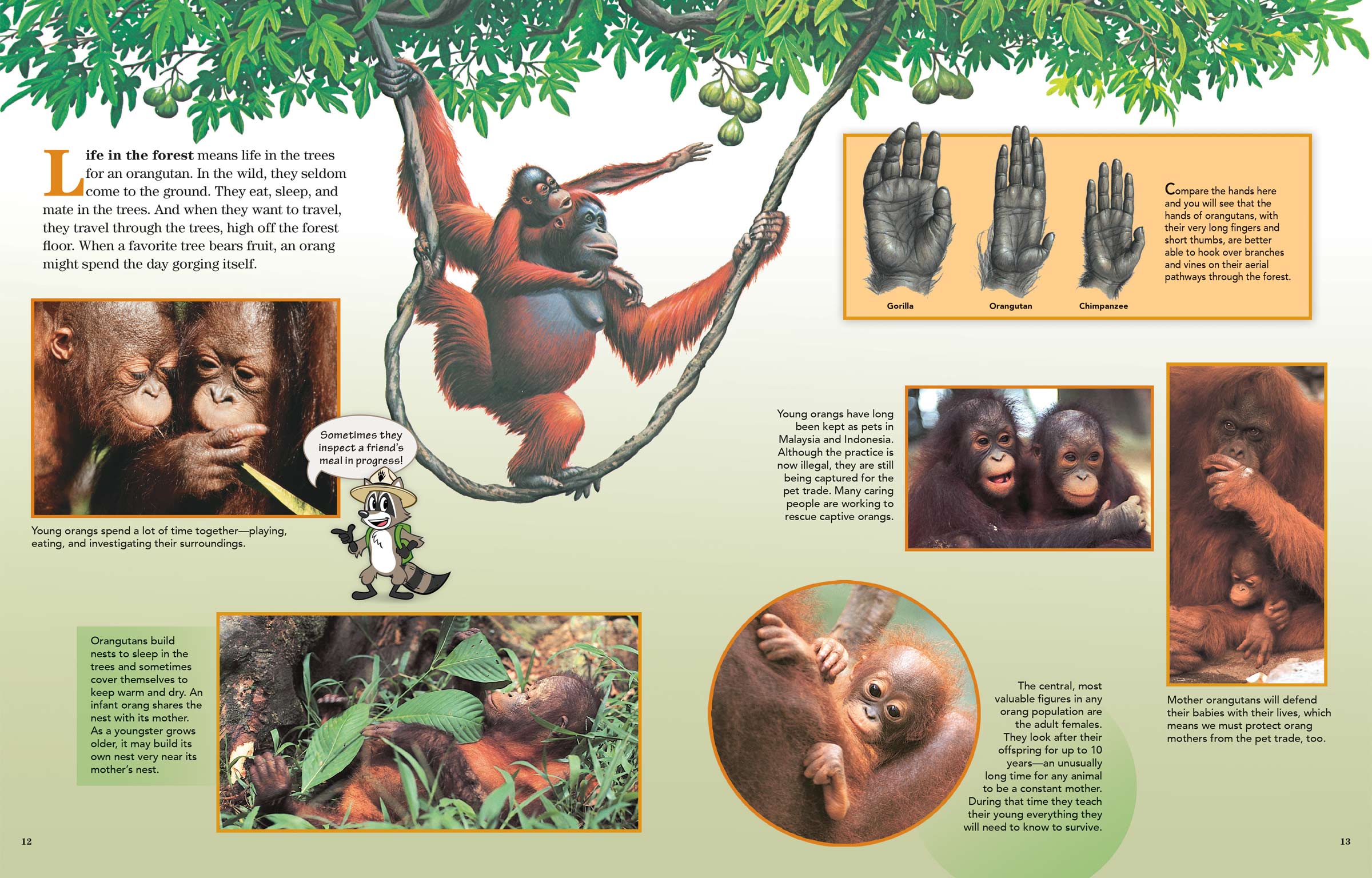
Life in the Forest
ByLife in the forest means life in the trees for an orangutan. In the wild, they seldom come to the ground. They eat, sleep, and mate in the trees. And when they want to travel, they travel through the trees, high off the forest floor. When a favorite tree bears fruit, an orang might spend the day gorging itself.
Young orangs spend a lot of time together—playing, eating, and investigating their surroundings. Sometimes they inspect a friend’s meal in progress!
Orangutans build nests to sleep in the trees and sometimes cover themselves to keep warm and dry. An infant orang shares the nest with its mother. As a youngster grows older, it may build its own nest very near its mother’s nest.
Compare the hands here and you will see that the hands of orangutans, with their very long fingers and short thumbs, are better able to hook over branches and vines on their aerial pathways through the forest.
Young orangs have long been kept as pets in Malaysia and Indonesia. Although the practice is now illegal, they are still being captured for the pet trade. Many caring people are working to rescue captive orangs.
The central, most valuable figures in any orang population are the adult females. They look after their offspring for up to 10 years—an unusually long time for any animal to be a constant mother. During that time they teach their young everything they will need to know to survive.
Mother orangutans will defend their babies with their lives, which means we must protect orang mothers from the pet trade, too.

